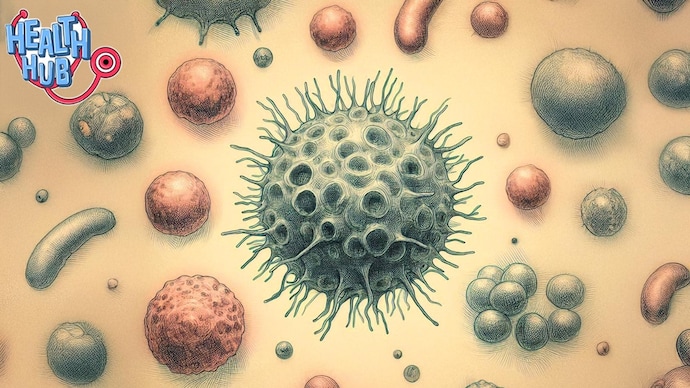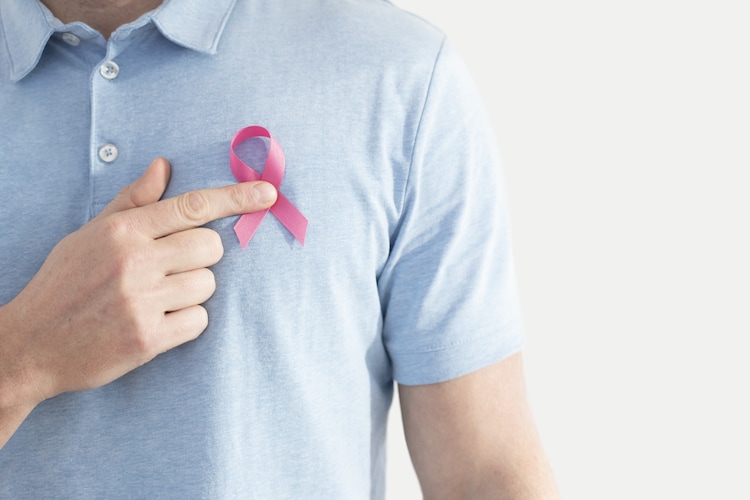Increase in India’s cancer: Number, science and hope
Since India faces the increasing burden of cancer cases, public awareness, more investment in lifestyle intervention, and technology-operated treatment solutions are important in its fight, in addition to lifestyle changes at the policy level.

India is facing a dangerous increase in cancer cases, in which the mortality rate is increasing at an unprecedented pace.
The Indian Council of Medical Research (ICMR) has exposed the real reality of this growing health crisis in its latest study published in the lensate, which has an immediate need for intervention.
Increasing cancer cases and mortality
According to the ICMR report, highlighting the need for strict measures to prevent this burden, according to the ICMR report, five out of five cancer patients in India faced the disease after diagnosis.
Researchers saw a steady increase in cancer cases over the past decade, indicating continuous growth over the next 20 years. The mortality between 2022 and 2050 is expected to increase from 64.7% to 109.6%.
Globally, in 2022, about 20 million new cancer cases were reported, with 9.7 million deaths.
In India alone, the estimated 1.4 million new cancer cases were reported in 2023, reflecting the growing effect of the disease on the population.

While lung cancer is increasing in both men and women, breast cancer has become the most common cancer in women.
According to a February 2025 report by the World Health Organization (WHO), one in 20 women have a high risk of breast cancer and one in 70 will die from it. In fact, if the current rates of diagnosis continue, by 2050 there will be 3.2 million new breast cancer cases and 1.1 breast cancer related deaths per year.
What is cancer?
Cancer is a deadly disease in which abnormal cells grow uncontrollably. Then attack the surrounding tissues and spread to other parts of the body.
This is caused by genetic mutation that disrupts normal cell regulation. Common types include breast, lungs and colorectal cancer.
In addition to having specific genes, factors such as smoking, poor diet, infection and radiation increase the risk.
Is India ready?
To address this growing crisis, the Government of India has implemented various policies, strategic interventions and financial aid programs, aimed at prevention, initial identity, treatment and patient care.
As part of the Union Budget, Rs 99,858.56 crore has been allocated to the Ministry of Health and Family Welfare. Within the next three years, plans are underway to set up day care cancer centers in all district hospitals, with 200 centers expected to be operational by 2025-26.
To reduce the cost of treatment, 36 life -saving drugs used for cancer, rare diseases and chronic conditions are exempted from a completely basic customs (BCD). Additionally, six life-sax drugs will attract a discounted customs of 5%, and drugs will also be completely exempted from BCD under patient aid programs run by pharmaceutical companies.

Under the National Health Mission, the national program for prevention and control of cancer, diabetes, heart diseases and stroke (NPCDCS) focuses on cancer screening, early identity and development of infrastructure.
The government’s public health insurance scheme, Ayushman Bharat Yojana, covers chemotherapy, radiotherapy and surgical oncology for economically weaker families, ensuring widespread access to cancer treatment.
By 2024, more than 90% of registered cancer patients started treatment under the scheme, reduced out-off-pocket expenses and ensured financial security for millions.
India is progressing in developing advanced treatment options. In April 2024, the country launched Nexcar19, which is its first indigenously developed CAR-T cell therapy for blood cancer.
This revolutionary treatment resumes the body’s immune cells to target and destroy cancer cells, expecting better patient results.
Despite significant progression, challenges ensure similar access to treatment, improve early detection, and address the increasing number of cancer.
How to reduce cancer mortality?
To reduce mortality, experts suggest that better awareness in identifying signs and symptoms can help increase the option and results of treatment.
Dr. According to Aditi Chaturvedi, one of the major methods of reducing the mortality rate of senior advisor, surgical oncology, breast cancer, Max super specialty hospitals, one of the major methods of reducing the mortality rate is through population-based screening.
Dr. Chaturvedi told India Today Digital, “Cancer is often found in a late phase, which leads to high mortality. The solution lies in raising awareness about signs and symptoms.”
He said that early detection improved the results of treatment significantly. “If people recognize subtle signs and do not ignore them, we can first diagnose cancer and improve the survival rate significantly.”
Dr. S. Vishwanath, Senior Advisor, Medical Oncologist, Relay Hospital, Chennai highlighted the role of lifestyle options in cancer events.
“While 5-10% of cases are genetic, the majority is associated with lifestyle factors. We need to promote healthy habits, although it will take time to change. If we start now, we can move the trend over the years,” Dr. Vishwanath explained.
Since India faces the increasing burden of cancer cases, more investment in public awareness, lifestyle intervention, and technology-operated treatment solutions are important in its battle, in addition to a lifestyle change at the policy level to promise healthy life.







